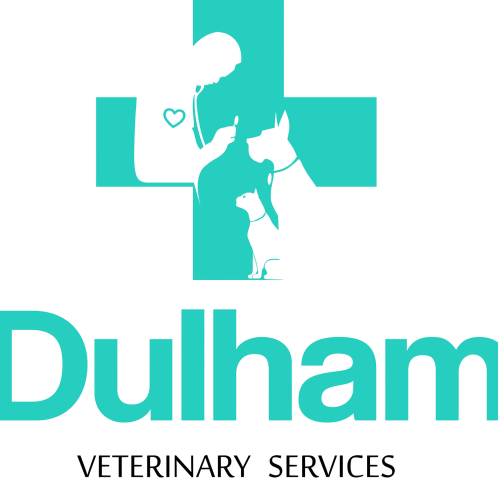Pet grooming is often misunderstood as a purely aesthetic practice—a luxury service for pampered pets or show animals. However, regular pet grooming is essential for health far beyond mere appearance. This comprehensive guide explores how consistent grooming routines directly impact your pet’s physical wellbeing, emotional state, and overall quality of life. Whether you have a short-haired cat, a double-coated dog, or a long-haired rabbit, understanding the health implications of grooming can significantly enhance your pet care routine and strengthen your bond with your animal companion.
The Physical Health Benefits of Regular Grooming
Skin and Coat Health
The most visible benefit of regular pet grooming is essential for health of the skin and coat. Brushing distributes natural oils throughout the fur, which:
- Prevents dry, irritated skin
- Reduces dandruff and flakiness
- Minimizes matting that can pull on skin and cause pain
- Creates a natural barrier against environmental contaminants
For pets with double coats, like Golden Retrievers or Siberian Huskies, regular brushing removes loose undercoat that would otherwise become impacted, leading to poor air circulation to the skin and potential hot spots or bacterial infections.
Parasite Detection and Prevention
One of the most critical health aspects of grooming is parasite control. Regular grooming sessions provide opportunities to:
- Identify flea infestations before they become severe
- Spot ticks before they transmit diseases
- Detect mites or lice that might otherwise go unnoticed
- Apply preventative treatments more effectively
When grooming your pet weekly, you’re more likely to notice a single flea or small tick than if you only check occasionally, allowing for early intervention and preventing more serious health complications.
Shedding Management
While shedding is natural for most pets, excessive loose fur can lead to several health issues:
- Ingestion of hair during self-grooming can cause digestive blockages
- Loose fur can harbor allergens, bacteria, and dust
- Mats formed from loose fur can trap moisture against the skin
Regular brushing removes loose fur in a controlled manner, significantly reducing these risks while keeping your home cleaner and reducing allergen levels for human family members.
Nail and Paw Care
Overgrown nails can cause serious mobility issues and pain for pets:
- Altered gait that stresses joints and ligaments
- Ingrown nails that become infected
- Cracked or split nails that bleed and hurt
- Reduced traction on smooth surfaces, increasing fall risk
Regular nail trimming as part of a complete grooming routine helps maintain proper paw health and comfortable movement.
RECOMMENDED
- Pet Skin Health: Detecting Infections, Parasites & Allergies with Expert Grooming
- Pet Vaccination at Home: Risks, Legalities, and Safer Alternatives
- Managing Golden Retriever Coats in Nigeria’s Climate: Essential Grooming Tips and Solutions
Detecting Early Health Problems
Perhaps the most valuable aspect of why regular pet grooming is essential for health monitoring is the opportunity to detect potential problems early. During grooming sessions, pet owners and professionals can identify:
Skin Abnormalities
- Lumps, bumps, or unusual growths
- Rashes or hot spots
- Wounds or scabs hidden under fur
- Changes in pigmentation
Ear Issues
- Excessive wax buildup
- Foul odors indicating infection
- Redness or inflammation
- Parasites like ear mites
Dental and Oral Health
- Bad breath indicating dental disease
- Inflamed gums
- Broken or loose teeth
- Unusual growths in the mouth
Eye Problems
- Discharge or excessive tearing
- Cloudy appearance
- Redness or inflammation
- Changes in pupil size or responsiveness
Many pet owners have discovered serious health conditions during routine grooming sessions, allowing for early veterinary intervention and improved treatment outcomes.
Emotional and Behavioral Benefits
The importance of grooming extends beyond physical health to significantly impact your pet’s emotional wellbeing:
Stress Reduction
For many pets, gentle brushing mimics the comforting social grooming they would receive from their mothers or littermates. This can:
- Lower cortisol (stress hormone) levels
- Reduce anxiety
- Create positive associations with human touch
- Establish trust and bonding
Regular handling during grooming also helps pets become more comfortable with veterinary examinations and other necessary health procedures.
Behavior Improvement
Well-groomed pets often display better behavior for several reasons:
- Reduced discomfort from mats, tangles, or skin irritation
- Fewer interruptions to play or rest for excessive scratching
- Improved mobility without overgrown nails
- Greater comfort in various weather conditions
Many pet owners report that their animals become more playful and engaged after grooming sessions, likely due to increased physical comfort.
Creating a Healthy Grooming Routine
Understanding that regular pet grooming is essential for health is just the beginning. Implementing an effective routine requires consideration of:
Species and Breed-Specific Needs
Different pets require tailored grooming approaches:
- Short-haired cats may need weekly brushing
- Long-haired dogs might require daily brushing and monthly professional grooming
- Rabbits need regular brushing during shedding seasons
- Guinea pigs benefit from weekly gentle brushing
Research your specific pet’s needs or consult with a veterinarian or professional groomer to establish appropriate guidelines.
Frequency Considerations
Optimal grooming frequency depends on several factors:
- Coat type and length
- Season and shedding patterns
- Activity level and environment
- Age and health status
- Skin conditions
Adjust your routine seasonally, with more frequent brushing during heavy shedding periods and special attention during environmental changes.
Professional vs. Home Grooming
A balanced approach often works best:
- Professional grooming every 4-12 weeks (depending on breed)
- Regular home maintenance between appointments
- Professional handling of complex tasks like anal gland expression
- Veterinary care for any medical grooming needs
Professional groomers can often detect health issues that owners might miss, providing another layer of health monitoring.
Common Grooming Mistakes to Avoid
Understanding why regular pet grooming is essential for health also means recognizing potential pitfalls:
Bathing Too Frequently
Excessive bathing strips natural oils from the skin and coat, potentially causing:
- Dry, flaky skin
- Brittle fur
- Overproduction of oils as the body compensates
- Potential skin infections
Using Improper Tools
Using the wrong grooming tools can cause discomfort or injury:
- Brushes not suited for your pet’s coat type
- Dull nail clippers that crush rather than cut
- Human shampoos that disrupt pet skin pH
- Improper clipper blades for coat type
Overlooking Sensitive Areas
Some areas require special attention:
- Ear cleaning without proper technique
- Eye area care
- Paw pad maintenance
- Sanitary area grooming
The Vital Role of Regular Grooming in Your Pet’s Health and Wellbeing
The evidence is clear: regular pet grooming is essential for health maintenance in companion animals. Far from being merely cosmetic, consistent grooming practices contribute significantly to physical health, early disease detection, emotional wellbeing, and behavioral stability. By implementing appropriate grooming routines tailored to your pet’s specific needs, you’re providing crucial preventative healthcare that can extend and improve your pet’s quality of life.
Remember that grooming sessions also strengthen the human-animal bond, creating opportunities for positive interaction and affection. This combination of health monitoring and relationship building makes grooming one of the most valuable investments you can make in your pet’s overall wellness. Whether you choose professional services, home care, or a combination of both, prioritizing regular grooming is a fundamental aspect of responsible pet ownership.
At Dulham Veterinary Clinic, we offer expert pet grooming services to keep your furry friend clean, comfortable, and looking their best. From coat trimming and de-shedding to nail clipping and ear cleaning, our professional team ensures a stress-free grooming experience. Give your pet the care they deserve—schedule a grooming session with us today!
Visit Us
No 23 Crown Court Estate 2, Orunbe Close, Oniru, Victoria Island, Lagos.
Phone Us
0806 632 9826
Mail Us
Frequently Asked Questions on Pet Grooming
1. How often should I groom my pet?
The frequency of grooming depends on your pet’s breed, coat type, and lifestyle. Long-haired breeds may require daily brushing, while short-haired pets may only need grooming once or twice a week. Bathing is typically recommended every 4-6 weeks, but pets that spend a lot of time outdoors may need more frequent cleaning.
2. Can I groom my pet at home, or should I use professional services?
You can groom your pet at home with regular brushing, nail trimming, and bathing. However, professional grooming is beneficial for deep cleaning, proper coat trimming, and handling tasks like ear cleaning and anal gland expression. A combination of both home and professional grooming ensures optimal hygiene and health for your pet.
3. What are the signs that my pet needs grooming?
Common signs that your pet needs grooming include excessive shedding, matted fur, a strong or unpleasant odor, long or curling nails, wax buildup in the ears, and tear stains around the eyes. If your pet frequently scratches or licks themselves, it may also indicate the need for grooming.
4. Does grooming help with my pet’s overall health?
Yes! Regular grooming prevents matting, reduces shedding, keeps the skin and coat healthy, and helps detect issues like lumps, ticks, infections, or skin conditions early. Grooming also improves circulation, minimizes odors, and enhances your pet’s overall comfort and wellbeing.

